Session Etiquette: How Join In, Start Tunes, & Fit In
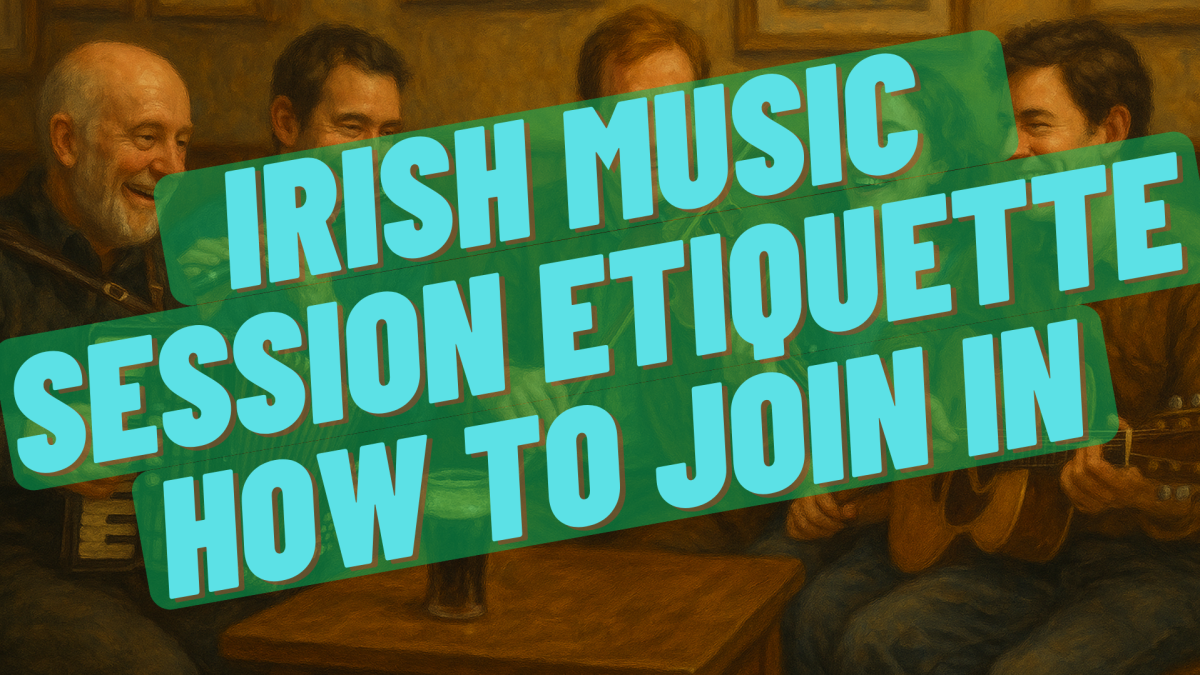
Some basic things to remember when you're a beginner joining an Irish traditional music session.
Session Etiquette: how to join, start tunes, and fit in
Irish traditional music sessions—seisiúns—are at once magical and mysterious. To an outsider, a session may look like spontaneous musical chaos; to insiders, it’s a living tradition with unspoken norms, social rhythms, and expectations. Understanding session etiquette is as much about listening as playing. As Barry Foy writes in his Field Guide to the Irish Music Session (often held up as the definitive guide to session culture), these gatherings are “dynamics and etiquette in their natural habitat” and the better one understands them, the more one can contribute rather than clash (https://www.frogchartpress.com/field-guide)
Below is a guide to getting into sessions gracefully—joining, leading tunes, and finding your place in the flow—built from Foy’s insight, classic session wisdom, and accumulated tips from forums and blogs.
1. The mindset: humility, listening, respect
Before your hands hit your instrument, your attitude matters. In Foy’s Field Guide, he emphasizes that sessions are social ecosystems, not performance stages. The people, the tunes, the room—all are part of a shared experience.
Begin by listening deeply. Sit for one or more sets before playing. Let your ears orient to the speed, phrasing, ornamentation styles, and tune choices. In The Session forums, several veteran players counsel newcomers: “don’t interfere with the flow of the music at the session you’re visiting – watch and learn.” (https://thesession.org/discussions/10525)
By listening first, you also show respect to the regulars, the anchors, and the implicit norms of that particular night. Each session has its own “house rules,” and behaving adaptively is part of the etiquette.
2. Asking to join and blending in
Once you feel ready to join, do so with courtesy. Many session-etiquette blogs recommend introducing yourself, asking permission, and leaning in quietly rather than barging in. The blog Learn Irish Tunes suggests: “play quietly and softly” when uncertain, avoid loud instrumentation, and check with a neighbour before starting.(https://learnirishtunes.com/session-etiquette-2/)
McNeela Music’s blog on Irish trad sessions puts it succinctly: “Push in. Introduce yourself to the group and ask permission before you join in.” (https://blog.mcneelamusic.com/the-irish-trad-session-explained/)
Once you’ve gotten a nod (or at least not been rebuffed), follow with caution: begin with a quieter part or simpler role (perhaps a backup line) until your comfort grows.
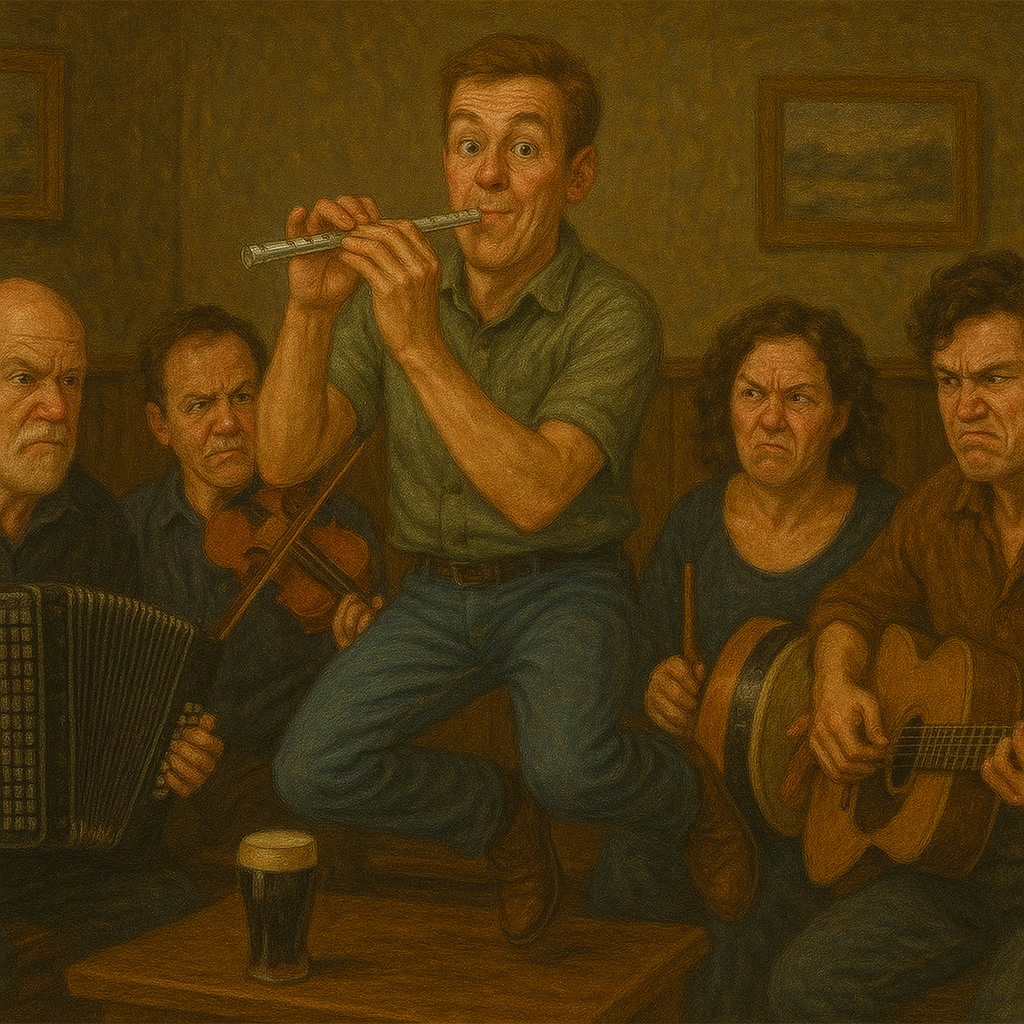
3. When to stay out (or sit silently)
One of the simplest but hardest rules: if you don’t know the tune, don’t play it—or play only very softly, quietly, or in a spare supporting fashion. In Foy’s guide, and echoed across session lore, this is a cardinal rule.
Tim Brooks, in his “Unwritten Rules of the Traditional Music Session,” warns that the fastest way to kill goodwill is to play obscure or complex tunes repeatedly to show off. After all, sessions thrive on common repertoire—tunes many people know. (https://www.oldtimetim.com/sessionrules.htm)
In session forums, a common admonition is: if you start a tune and nobody joins in (i.e. people don’t know it), move on. Don’t force a set solely to showcase your personal list. Furthermore, volume is a subtle but vital part of etiquette. Learn Irish Tunes cautions that melody players should be especially conscious of their instrument’s projection (e.g. concertina) and not overpower others. Irish session rules pages stress: “never overpower the melody” is a core principle. This is especially acute when a singer or air is in the set: accompaniment must drop back. (https://www.irelandlogue.com/about-ireland/irish-session-rules.html)
4. Leading a tune: how, when, and what to pick
Every tune must begin somewhere, and leading a tune is a subtle art. The difference between a welcome set starter and an overreach often comes down to choice, timing, and clarity.
Choosing the tune. As Brooks warns, avoid launching with three obscure tunes in a row. Instead, lead with something familiar, well-known in that circle, or safe for most players. Include at most one “surprise” tune in the set, but follow it with something joinable.
Watching for the right moment. Wait for a lull or break between sets. Make eye contact, or a head nod, to establish your intention to start. Don’t leap in mid-phrase. The Session forum offers this practical counsel: “Wait for a lull, make eye contact, and give a clear pickup at a sensible tempo.”
Giving a clean pickup. A crisp, unambiguous lead-in or “pickup bar” helps everyone enter together. Don’t hesitate to count in if needed (e.g. “1–2–3–4”). The goal is clarity, so others don’t feel blind-sighted. Foy’s guide underscores the role of leaders in shaping collective flow.
Repetitions, transitions & endings. A typical set structure is: play a tune (often 2 or 3 times through), then move to the next. Don’t over-announce multiple sets; after finishing, wait a beat, or let someone else lead next. In The Session forums the etiquette debate about starting two sets back-to-back is common—many agree it’s courteous to allow others a chance to start their tune. Also, ensure your ending is clean and recognizable, so accompanists and players know when the tune is done and can transition or reset. Ambiguous endings can disrupt flow.
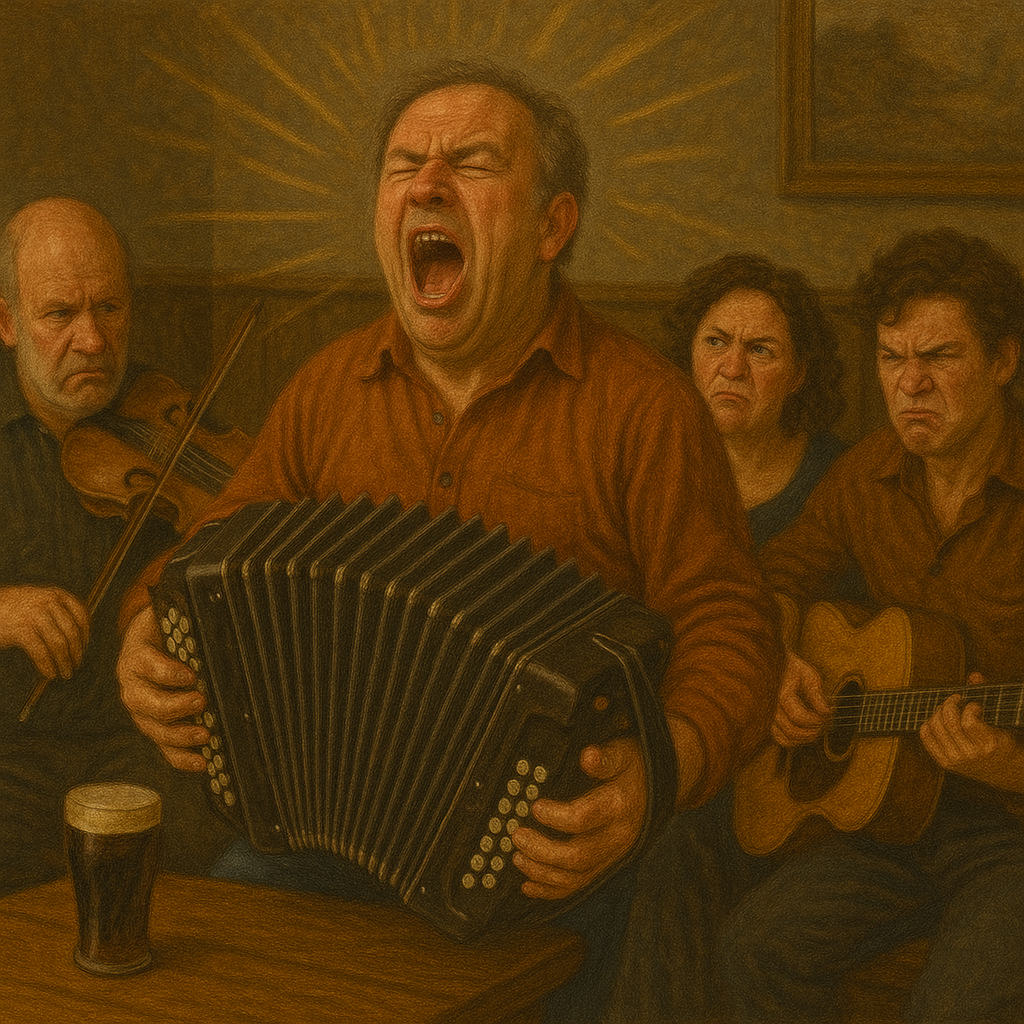
5. Volume, texture, and blending
One of the most nuanced areas of session etiquette is dynamic awareness—how loud you play and when to reduce texture so the tune “breathes.”
- Always lean to mildness in uncertain cases. Let melody players shine; let accompaniment support gently.
- Learn Irish Tunes warns that some instruments (like concertina) tend to be more audible, so players must self-regulate.
- McNeela's The Irish Trad Session Explained blog also advises blending volume appropriately and avoiding dominating the soundscape.
- Pub session etiquette pages caution that clapping or vocal interjections should be moderate; strong applause during tunes can break concentration or timing. (https://doolin.ie/11-tips-to-enjoy-an-authentic-irish-trad-session/)
Know your role: if you’re accompanying, favor sparse voicing, drones, bass motion, or open fifths rather than dense chords. Stay alert to when the melody needs space (e.g. at phrase endings or during ornamentation). Some Session threads criticise guitarists (and Bouzouki players too!) who “muscle in” with heavy strums.
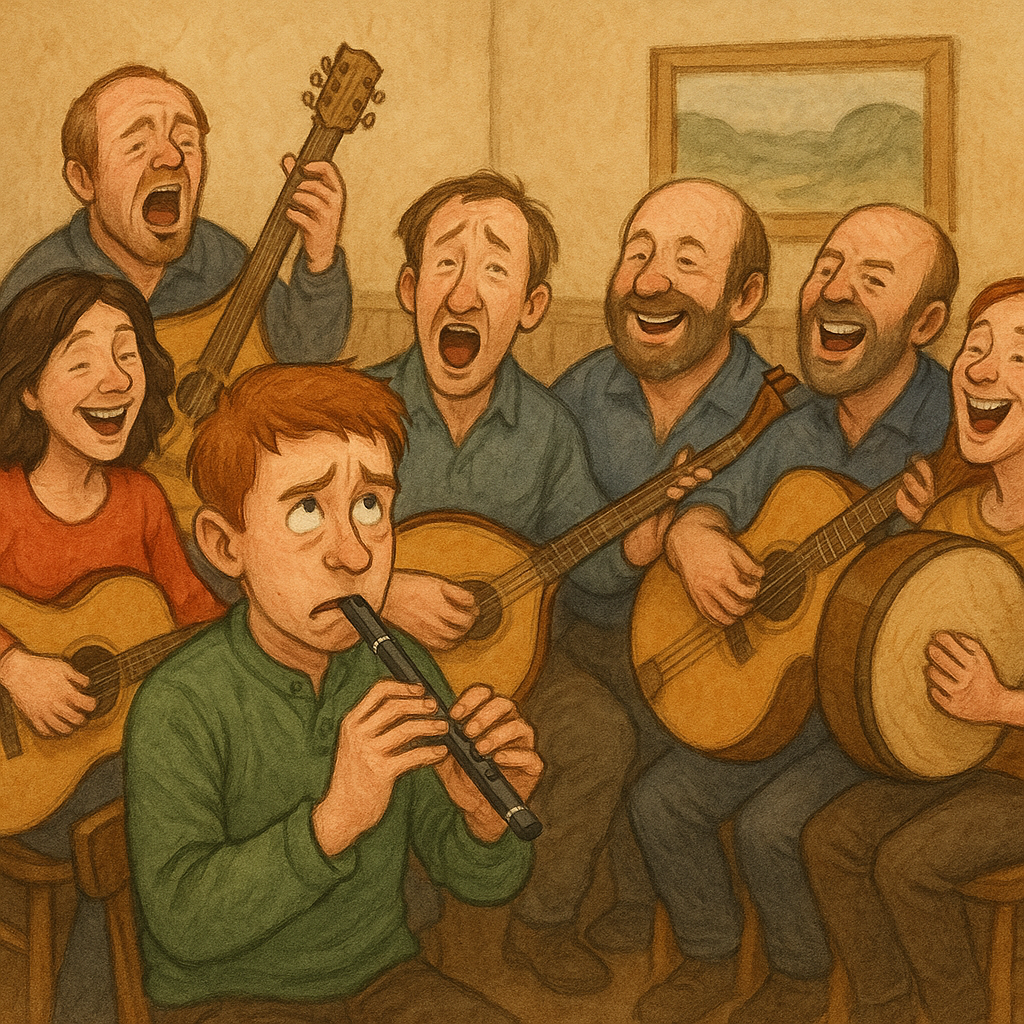
6. Reading the room: flexibility & adaptation
Even the best intentions can misfire if you don’t read the specific session you’re in. As one Session thread observes, “Every session has its own protocol … visiting musicians must do their best to follow them.”
Here are signals to watch for:
- What speed are tunes going? Don’t jump in at a tempo much faster or slower than the norm.
- Are people exchanging looks or nods before each tune? That suggests more structured leadership.
- How many accompanists are there? If the room already has multiple guitarists or bouzoukis, consider sitting out or using a more restrained texture.
- How familiar is the tune? If first two people don’t join your start, scale back or pick something else.
- Is there chatter or applause between sets? That may indicate informal pauses; don’t cut them short with another tune.
Above all, be willing to sit out, step back, or mute your instrument if the night’s direction changes. Flexibility is a mark of maturity.
7. Mistakes, feedback & recovery
Errors happen—even to seasoned players. In fact, how you respond to mistakes can say more than the mistake itself.
- Don’t stop or freeze—keep going if you can, or ease out gracefully.
- Don’t apologise mid-tune: many regular players won’t even notice minor slips.
- After the set, you might quietly ask an experienced player, “Hey, did I drag bar 8? Should I try that tune slower next time?” Many sessions accept helpful, modest queries.
- Avoid defensiveness or insisting “no, that’s my version.” Flexibility is more welcome.
In Foy’s guide, the social fabric of sessions is upheld by kindness and mutual respect—not rigid policing. A misstep, politely acknowledged, is often forgiven more graciously than heavy-handed correction.
8. Session etiquette checklists & quick dos & don’ts
Here’s a handy summary:
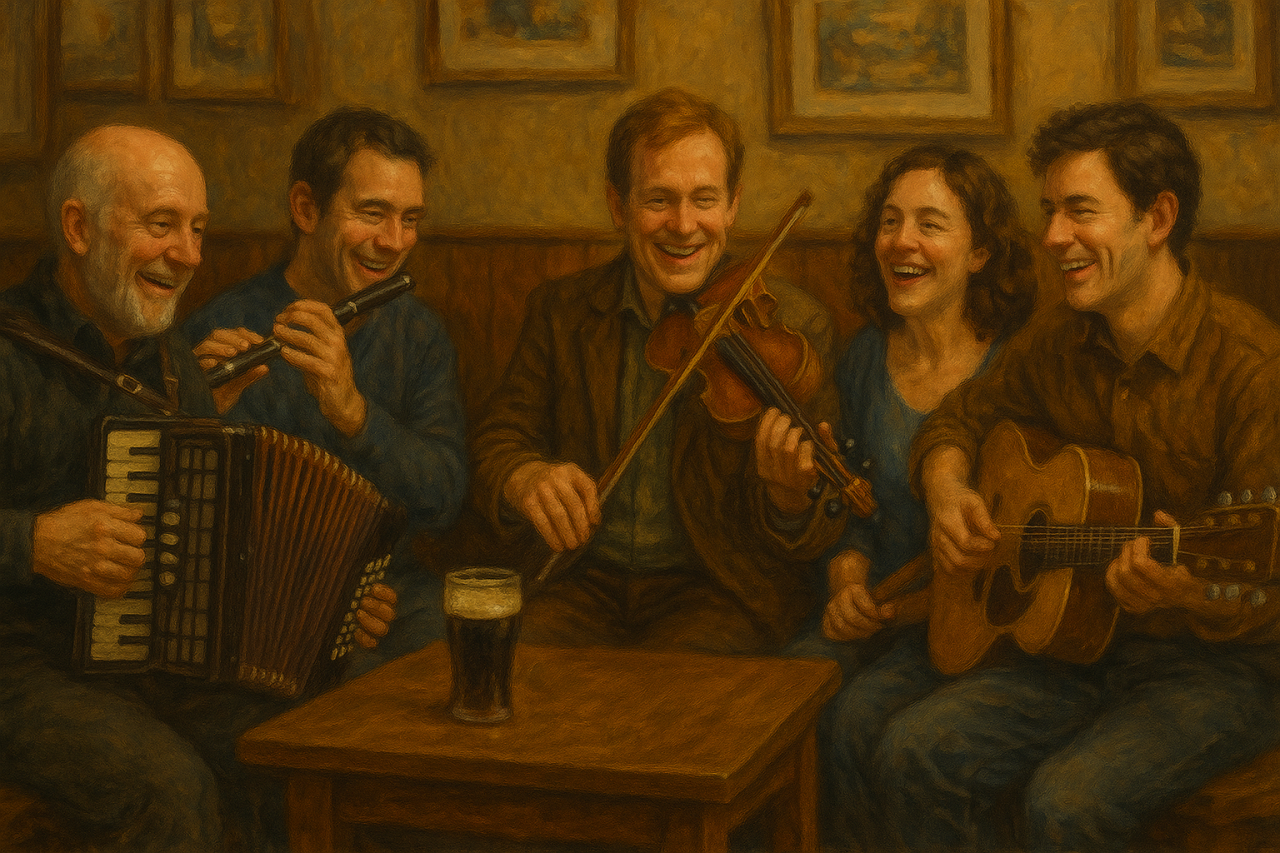
Do:
- Listen for at least one full set before playing
- Introduce yourself and ask to join
- Start with quiet, simple contributions
- Choose familiar tunes first
- Give a clear pickup and clean ending
- Allow others to lead
- Monitor your volume and blend
- Be adaptable to session norms
- Recover mistakes gracefully
- Between tunes, relax, chat, or take a break
Don’t:
- Play a tune you don’t know
- Bar into a set mid-phrase
- Force obscure tunes repeatedly
- Hog tune starts or dominate dynamics
- Criticise others publicly
- Disrupt transitions or endings
- Assume your “style” is the style
9. Why etiquette matters: preserving flow, community, and learning
At its heart, session etiquette is about flow—not rigid rules. A smoothly running session feels like a conversation, where ideas (tunes) are passed, responded to, and woven together. When etiquette breaks down, the music stutters, the regulars close off, and newcomers feel unwelcome.
Barry Foy’s Field Guide frames sessions as cultural gatherings: more than entertainment, they are sites of tradition, exchange, and belonging.
Good manners foster inclusivity: new players feel comfortable joining, regulars feel respected, and the music stays alive. Many blogs on session tips echo this: Celtic Music Sessions: Top Tips for Successful Gatherings describes active listening, respecting silence (especially during airs or songs), and watching cues as central practices. (https://www.celticmusik.com/post/celtic-music-sessions-top-tips-for-successful-gatherings)
In 11 Tips to Enjoy an Authentic Irish Trad Session, Doolin Tourism recommends that participants realize “they are part of the experience,” respecting both musicians and listeners, and moderating distractions like phone use.
In the end, etiquette isn’t about rules for their own sake—it’s about inviting musical conversation, sustaining trust, and making space for voices old and new.
10. Final thoughts: growth, confidence, and paths forward
If you’re new to sessions, take it slow. Use your first few visits to absorb repertoire, do mental note-taking, and quietly test opening a simple melody or backing line. Let your confidence build in dialogue with the environment. Eventually, your presence becomes part of the session’s identity—not just a visitor, but a contributor. As Foy might counsel, the best session goers don’t dominate; they feel the room, offer ideas, and leave space for others. Over time, you may lead your first set, start crafting your versions of tunes, or even host your own session. But even then, the dignity and spirit of the session depend on respect, listening, generosity—and a little humility.
So next time you walk into a pub, fiddle in hand, remember: to join well is to begin by listening. The tunes will follow.
Categories: : Irish Traditional Music
 Declan Plummer
Declan Plummer 